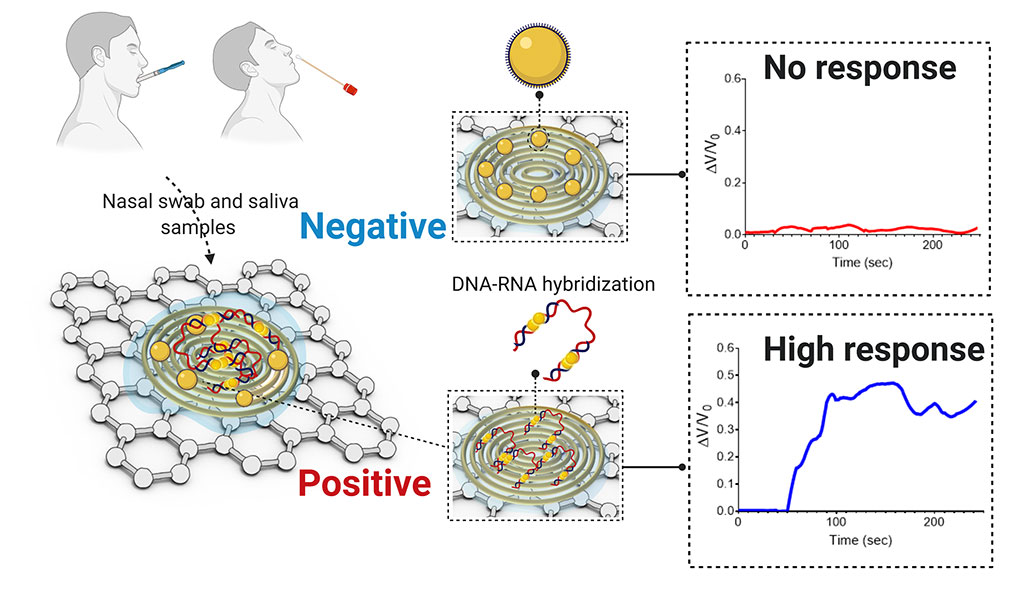Rapid, Ultrasensitive Test Uses Paper-Based Electrochemical Sensor to Detect COVID-19 in Five Minutes
By LabMedica International staff writers
Posted on 09 Dec 2020
A new rapid, ultrasensitive test can detect the presence of the SARS-CoV-2 virus in less than five minutes using a paper-based electrochemical sensor.Posted on 09 Dec 2020
A team of researchers at the University of Illinois Grainger College of Engineering (Urbana, IL, USA) has created a graphene-based electrochemical biosensor with an electrical read-out setup to selectively detect the presence of SARS-CoV-2 genetic material. In recent years, researchers have had some success with creating point-of-care biosensors using 2D nanomaterials such as graphene to detect diseases. The main advantages of graphene-based biosensors are their sensitivity, low cost of production and rapid detection turnaround. There are two components to this biosensor: a platform to measure an electrical read-out and probes to detect the presence of viral RNA.

Image: COVID-19 electrochemical sensing platform (Photo courtesy of University of Illinois Grainger College of Engineering)
To create the platform, researchers first coated filter paper with a layer of graphene nanoplatelets to create a conductive film. Then, they placed a gold electrode with a predefined design on top of the graphene as a contact pad for electrical readout. Both gold and graphene have high sensitivity and conductivity which makes this platform ultrasensitive to detect changes in electrical signals. Current RNA-based COVID-19 tests screen for the presence of the N-gene (nucleocapsid phosphoprotein) on the SARS-CoV-2 virus. For their research, the team designed antisense oligonucleotide (ASOs) probes to target two regions of the N-gene. Targeting two regions ensures the reliability of the senor in case one region undergoes gene mutation. Furthermore, gold nanoparticles (AuNP) are capped with these single-stranded nucleic acids (ssDNA), which represents an ultra-sensitive sensing probe for the SARS-CoV-2 RNA.
The researchers had previously showed the sensitivity of the developed sensing probes in their earlier work. The hybridization of the viral RNA with these probes causes a change in the sensor electrical response. The AuNP caps accelerate the electron transfer and when broadcasted over the sensing platform, results in an increase in the output signal and indicates the presence of the virus. The team tested the performance of this sensor by using COVID-19 positive and negative samples. The sensor showed a significant increase in the voltage of positive samples compared to the negative ones and confirmed the presence of viral genetic material in less than five minutes. Furthermore, the sensor was able to differentiate viral RNA loads in these samples. Viral load is an important quantitative indicator of the progress of infection and a challenge to measure using existing diagnostic methods.
“The discovery of graphene opened up a new era of sensor development due to its properties. Graphene exhibits unique mechanical and electrochemical properties that make it ideal for the development of sensitive electrochemical sensors,” said bioengineering graduate student, Maha Alafeef, who co-developed the test.
Related Links:
University of Illinois Grainger College of Engineering













